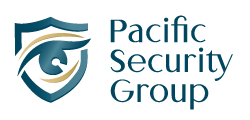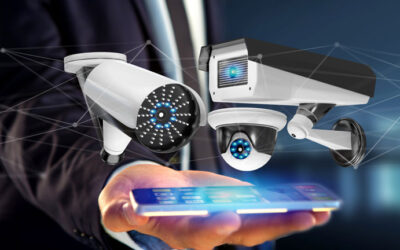Tailoring security systems to your industry to meet the unique demands of industries like retail, manufacturing, warehouses, and office spaces is essential. This approach ensures the safety of assets, employees, and customers against industry-specific threats such as theft, vandalism, and data breaches.
Tailored security strategies not only improve protection but also boost operational efficiency and create safer environments. This guide explores best practices across sectors, offering insights to help businesses develop informed security plans.
The Importance of Customised Security Solutions
In the realm of security, the concept of a one-size-fits-all solution is fundamentally flawed. The intricate and diverse requirements of different industries – be it retail, manufacturing, warehouses, or office spaces – demand customised security solutions. This tailored approach is not just a preference but a necessity for effective protection and risk management.
Why One-Size-Fits-All Doesn’t Work in Security
- Unique Risks and Threats: Each industry faces its own set of risks and threats. For example, retail spaces must contend with both external theft and internal shrinkage, while manufacturing plants must protect valuable equipment and safeguard proprietary information. A customised security system allows these unique challenges to be addressed directly and efficiently.
- Varying Operational Hours: The operational hours across different industries can vary significantly. Warehouses and manufacturing facilities might operate 24/7, requiring constant surveillance, whereas office spaces might only need security measures during off-hours. Customised solutions ensure that security systems align with operational schedules, providing optimal protection when it’s needed most.
- Diverse Physical Layouts: The physical layout of a business significantly influences its security needs. Retail stores with multiple entrances and exits, intricate warehouse setups with numerous storage areas, and sprawling office complexes each present unique security challenges that standard solutions cannot adequately address.
- Regulatory Compliance: Different industries are subject to various regulations concerning security and data protection. Customised security solutions can be designed to ensure compliance with these regulations, avoiding potential legal and financial repercussions.
- Scalability: As businesses grow and evolve, their security needs change. A customised security system can be designed with scalability in mind, allowing for easy adjustments and expansions to accommodate new risks, technologies, and business developments.
- Integration with Business Operations: Customised security solutions can be integrated with other business systems, such as inventory management in retail or access control in corporate offices. This integration enhances operational efficiency and security effectiveness.
In essence, customised security solutions acknowledge the unique characteristics and requirements of each industry, ensuring that security measures are as effective and efficient as possible. By moving away from the one-size-fits-all approach and towards tailor-made security strategies, businesses can significantly enhance their protection against risks and threats, ensuring peace of mind for both the business owners and their stakeholders.
Retail Sector Security Systems
Challenges and Risks in Retail Environments
Retail environments are dynamic and bustling spaces that face a unique set of security challenges and risks. The primary concern is theft, which can occur in various forms, including shoplifting, employee theft, and burglary. Retail spaces also grapple with the risk of vandalism and the safety of both employees and customers. Moreover, the high foot traffic and the necessity to maintain an inviting atmosphere for shoppers complicate the implementation of stringent security measures.
Best Practices for Retail Security Systems
To effectively mitigate these risks, adopting a holistic and layered approach to security is essential. Here are some best practices for retail security systems:
Advanced Surveillance for Theft Prevention
- High-Definition Cameras: Employ HD surveillance cameras strategically placed at entrances, exits, high-value item display areas, and cash registers. These cameras should have wide-angle capabilities and low-light functionality to ensure comprehensive coverage and clear images, even in dimly lit conditions.
- Real-Time Monitoring: Implement a system for real-time monitoring of surveillance feeds, allowing for immediate response to suspicious activities. This can be supported by employing security personnel or using remote monitoring services.
- Data Analytics: Utilise advanced surveillance systems equipped with video analytics to detect unusual behaviour patterns, such as loitering or frequent visits to sensitive areas, enabling pre-emptive action against potential theft.
Access Control Systems for Employee Safety
- Restricted Access: Install access control systems to restrict entry to employee-only areas, stockrooms, and offices. This not only protects valuable inventory but also ensures employee safety by limiting access to authorised personnel only.
- Biometric Systems: Consider using biometric access control systems, such as fingerprint or facial recognition technologies, for enhanced security in areas where sensitive items or information are stored.
- Emergency Response Integration: Integrate access control systems with emergency response protocols to ensure quick lockdown capabilities in the event of a threat, allowing for the protection of both employees and customers.
- Employee Training: Regularly train employees on security procedures and the proper use of access control systems. Educated employees are an essential component of a comprehensive security strategy, as they can help prevent unauthorised access and respond effectively in emergencies.
Implementing these advanced surveillance and access control measures, tailored to the specific needs and challenges of the retail environment, will significantly enhance the security of retail spaces, protecting assets, employees, and customers alike.
Security Systems in a Manufacturing Industry
Securing Manufacturing Plants: Unique Considerations
Manufacturing plants encompass a broad spectrum of activities, from the production of consumer goods to heavy industrial processing. The security needs of these facilities are complex and multifaceted, reflecting the varied nature of the manufacturing sector. Key considerations include:
- Protecting Valuable Assets: Manufacturing plants often contain expensive machinery and raw materials, making them prime targets for theft and vandalism.
- Safeguarding Proprietary Information: Industrial espionage can be a significant threat, with competitors potentially targeting trade secrets and innovative processes.
- Ensuring Employee Safety: Manufacturing environments can be hazardous, necessitating systems that not only prevent unauthorised access but also ensure the safety of all personnel.
- Monitoring Perimeter and Access Points: Large manufacturing facilities require careful monitoring of all access points to prevent intrusion and ensure secure logistics.
Tailored Security Measures for Manufacturing Sites
Comprehensive Surveillance Techniques
- Deployment of High-Resolution Cameras: Utilising cameras capable of capturing high-detail footage across large areas is critical, especially in zones housing valuable assets or sensitive information.
- Integration of Thermal Imaging: For perimeter surveillance, especially in low-light conditions, thermal imaging cameras can detect intruders based on heat signatures.
- Use of Drones for Aerial Surveillance: Drones offer an agile and comprehensive method to monitor large manufacturing complexes, providing real-time data and the ability to quickly respond to security breaches.
Perimeter Security and Access Control
- Advanced Perimeter Intrusion Detection Systems: Implementing state-of-the-art intrusion detection systems that can differentiate between potential threats and non-threats, minimising false alarms.
- Biometric Access Controls: Employing biometric systems, such as fingerprint and retina scans, ensures that only authorised personnel can access sensitive areas, enhancing both security and safety.
- Integrated Security Management Systems: A unified platform that combines video surveillance, access control, and alarm systems for a cohesive security approach. This integration allows for centralised monitoring and control, ensuring swift response to any security event.
- Regular Security Audits and Employee Training: Conducting regular audits of the security infrastructure and training employees on security best practices are crucial for maintaining a robust defence against potential threats.
By addressing the unique security considerations of manufacturing plants with tailored measures, businesses can protect their assets, safeguard their proprietary information, ensure the safety of their employees, and maintain uninterrupted operations.
Warehouse Security Systems
Vulnerabilities in Warehouse Settings
Warehouses face a unique set of security challenges due to their large physical footprints, valuable inventory, and often remote locations. These vulnerabilities make warehouses attractive targets for theft, both external and internal, as well as vandalism. Other security concerns include unauthorised access, which can lead to inventory loss or damage, and safety risks to staff. Additionally, warehouses may house sensitive information or high-value items, increasing the risk of targeted thefts or espionage.
Optimising Security for Warehouses
Intrusion Detection Systems
- Layered Security Approach: Implement a multi-layered intrusion detection system that includes perimeter alarms, motion detectors, and contact sensors on doors and windows. This approach ensures that if one layer is bypassed, others will still provide protection.
- Tailored Sensor Placement: Customise the placement of sensors based on the warehouse’s specific layout and vulnerability points. Consider areas like loading docks, entry points, and areas where high-value items are stored.
- Integration with Surveillance Systems: Integrate intrusion detection systems with CCTV surveillance for real-time alert verification. This allows security personnel to quickly assess alarms and respond appropriately.
- Nightly Patrols—a manpower presence for on-site security or random patrols to ward off any untoward behaviour planned. Foot patrols, spotlight drive-bys, and on-site security personnel at set times.
Integrated Security Solutions for Inventory Protection
- RFID Tags for Inventory Tracking: Utilise RFID technology for real-time inventory tracking. This not only aids in the management of stock levels but also helps in identifying any unauthorised movement of goods within or out of the warehouse.
- Access Control Systems: Deploy advanced access control systems at entry points and restricted areas to ensure that only authorised personnel can access certain locations within the warehouse. Use biometrics, key cards, or mobile credentials for secure and convenient access control.
- Regular Security Audits: Conduct regular security audits to identify potential vulnerabilities and ensure that all security measures are functioning correctly. This includes testing alarm systems, inspecting camera footage, and reviewing access logs.
- Employee Training: Educate warehouse staff on security protocols and the proper use of security systems. A well-informed team is crucial for maintaining a secure environment and can act as the first line of defence against potential threats.
Optimising security for warehouses involves a combination of advanced technology, strategic planning, and continuous evaluation. By addressing the unique vulnerabilities of warehouse settings with tailored security measures, businesses can protect their assets, ensure the safety of their employees, and maintain operational efficiency.
Office Space Security Systems
Security Challenges in Modern Office Spaces
Modern office spaces, while fostering innovation and collaboration, present unique security challenges that necessitate vigilant protection strategies. The primary concerns include the safety of employees, the security of physical and digital assets, and the protection of sensitive information. The open nature of many modern offices, combined with the integration of technology in daily operations, increases vulnerability to both physical and cyber threats. Unauthorised access, data breaches, theft, and vandalism are just a few risks that modern office spaces face.
Best Practices for Office Security
Smart Access Controls
- Implement Advanced Access Control Systems: Utilise technology such as key cards, biometric scanners, or mobile access controls to manage entry points and restrict access to sensitive areas within the office. These systems should be capable of providing detailed logs of entry and exit activities.
- Tailor Access Levels: Customise access levels for different groups or individuals based on their roles and needs. This ensures that employees have access only to the areas necessary for their job functions, minimising potential security breaches.
- Integration with Other Systems: For enhanced security, integrate access control systems with surveillance cameras, alarms, and other security measures. This allows for a coordinated response to any unauthorised access attempts.
Cybersecurity Measures for Office Networks
- Secure Wi-Fi Networks: Ensure that Wi-Fi networks are secure, encrypted, and hidden. Implement strong passwords and consider using a virtual private network (VPN) for an additional layer of security.
- Regular Software Updates: Keep all systems, including operating systems, applications, and security software, up to date with the latest patches and updates. This helps protect against vulnerabilities and cyber threats.
- Employee Training: Conduct regular cybersecurity awareness training for all employees. Teach them about the importance of strong passwords, recognising phishing attempts, and safe internet practices.
- Data Encryption: Encrypt sensitive data both at rest and in transit to protect against unauthorised access or breaches. Consider the use of end-to-end encryption for sensitive communications.
- Incident Response Plan: Develop and regularly update an incident response plan. This should outline the steps to be taken in the event of a cyber-attack or data breach, including notification procedures and steps to mitigate damage.
By implementing these best practices for office security, businesses can create a secure and resilient environment that protects both their physical and digital assets. Smart access controls and robust cybersecurity measures are essential components of a comprehensive security strategy for modern office spaces.
Leveraging Technology for Enhanced Security
The evolution of security technology is transforming how businesses protect their assets, employees, and data. The integration of artificial intelligence (AI), machine learning, the Internet of Things (IoT), and cloud-based systems is at the forefront of this revolution, offering advanced solutions that are more efficient, reliable, and adaptable than ever before.
The Role of AI and Machine Learning in Security Systems
AI and machine learning are redefining the capabilities of security systems, providing unprecedented levels of intelligence and automation. These technologies enable security systems to:
- Predictive Analysis: AI algorithms can analyse vast amounts of data from various sources to identify patterns and predict potential security threats before they occur. This proactive approach to security helps prevent incidents rather than merely responding to them.
- Facial Recognition and Behavioural Analytics: AI-powered surveillance cameras can identify individuals and analyse behaviour in real time, alerting security personnel to suspicious activities or unauthorised access attempts.
- Automation of Routine Tasks: AI can automate routine surveillance and monitoring tasks, allowing security personnel to focus on higher-level strategic activities. This includes automated incident detection and response protocols.
The Future of Security: IoT and Cloud-Based Systems
The integration of IoT and cloud-based technologies into security systems offers enhanced connectivity, scalability, and flexibility, marking a significant shift in how security infrastructures are designed and managed.
- Enhanced Connectivity: IoT devices can be integrated into a unified security system, providing comprehensive coverage across multiple locations and various types of assets. This connectivity ensures that security managers have a holistic view of their security posture at all times.
- Scalability: Cloud-based security systems can easily be scaled up or down based on the organisation’s needs, allowing for the addition of new technologies or expansion into new locations without significant infrastructure investment.
- Remote Management: Cloud-based platforms enable remote management of security systems, allowing for real-time monitoring, updates, and incident response from anywhere in the world. This level of flexibility is particularly valuable in today’s dynamic business environments.
- Data Security and Privacy: While leveraging cloud-based and IoT technologies, it’s crucial to implement robust cybersecurity measures to protect against data breaches and ensure compliance with data protection regulations.
As technology continues to evolve, the future of security systems looks increasingly integrated, intelligent, and adaptable. Leveraging AI, machine learning, IoT, and cloud-based technologies not only enhances the effectiveness of security measures but also provides a more seamless and user-friendly experience for both security professionals and the individuals they protect. The ongoing development of these technologies promises to deliver even more innovative solutions in the years to come, further transforming the security management landscape.
Implementing Your Industry-Specific Security System
Steps to Tailor Your Security System
- Assessment of Specific Security Needs: Begin with a thorough assessment of your industry-specific risks and vulnerabilities. Understand the unique challenges your sector faces, whether it’s retail, manufacturing, warehouses, or office spaces. Consider factors like asset value, employee safety, data security, and potential threats.
- Consultation with Security Experts: Leverage the knowledge of security professionals who have experience in your industry. They can provide insights into best practices and innovative solutions that have been effective in similar settings.
- Designing a Custom Security Plan: Utilise the expertise of security consultants to design a comprehensive security plan that addresses all identified risks. This plan should include a mix of physical and digital security measures tailored to your specific operational needs.
- Integration of Advanced Technologies: Consider integrating advanced technologies such as AI, machine learning, IoT devices, and cloud-based security solutions. These technologies can enhance the efficiency and effectiveness of your security system, providing real-time monitoring and predictive analytics to preempt threats.
- Implementation and Testing: Once the security system design is finalised, proceed with the implementation. Ensure that all components of the system are installed and configured correctly. Conduct thorough testing to verify that the system functions as intended and meets all security requirements.
- Training and Awareness: Train your employees on the new security system, focusing on proper operation, response protocols, and awareness of potential security threats. Employee education is crucial for the effectiveness of your security measures.
- Ongoing Review and Adjustment: Security needs can evolve due to changes in the operational environment, emerging threats, or technological advancements. Regularly review and adjust your security system to ensure it remains effective and aligned with your current needs.
Partnering with Security Experts
Choosing the right security partner is critical to the success of your industry-specific security system. Look for a security provider that offers:
- Experience in Your Industry: Partner with a security firm that has a proven track record in your sector. They should understand the nuances of your industry’s security challenges and offer tailored solutions.
- Comprehensive Service Offering: Select a provider that offers a broad range of services, from risk assessment and system design to installation, monitoring, and ongoing support. This ensures a holistic approach to your security needs.
- Commitment to Innovation: Your security partner should be committed to leveraging the latest technologies and best practices in security management. This includes the use of AI, IoT, and cloud-based solutions to enhance security measures.
- Award-Winning Service: Opt for a provider with a reputation for exceptional service, as evidenced by industry awards and certifications. This indicates a dedication to quality and reliability in their service offering.
- Licensed and track record of trade. Ensure your chosen security provider has a security firms license and is registered with a security government body such as ASIAL or SPAAL.
Implementing an industry-specific security system is a complex but essential task that requires careful planning, the right technology, and a partnership with experienced security experts. By following these steps and choosing a capable security partner, you can protect your assets, employees, and data against the ever-evolving landscape of security threats.
Key Takeaways
- The Necessity of Industry-Specific Security Systems: Each industry, from retail and manufacturing to warehouses and office spaces, faces unique security challenges. Customised security solutions are essential to address these specific vulnerabilities effectively. Understanding the distinctive threats and operational dynamics of each sector is the first step toward developing an effective security strategy that safeguards assets, information, and personnel.
- Best Practices for Tailoring Security Solutions in Various Sectors: Tailoring security solutions involves a comprehensive assessment of the unique risks associated with each industry. For the retail sector, advanced surveillance and access control systems are crucial for theft prevention. In manufacturing, integrating access control with surveillance ensures the protection of valuable assets and proprietary information. Warehouses benefit from a security overhaul that includes intrusion detection systems and RFID technology for inventory protection. Office spaces are moving towards smart security integration, emphasising the importance of cybersecurity alongside physical security measures.
- The Increasing Role of Technology in Enhancing Security Measures: The integration of advanced technologies such as AI, machine learning, IoT devices, and cloud-based systems is revolutionising security strategies across industries. These technologies enable predictive analytics, real-time monitoring, and enhanced connectivity, offering a more proactive and comprehensive approach to security. The future of security systems lies in the seamless integration of physical and digital security measures, ensuring a holistic defence mechanism that is both efficient and adaptable to evolving threats.
The evolution of security practices underscores the importance of staying ahead of emerging threats through continuous innovation and adaptation. By leveraging technology and industry-specific insights, businesses can develop robust security frameworks that not only protect against current threats but are also scalable for future challenges.
Conclusion
Tailoring security to specific industry needs ensures not only asset protection but also fosters a secure, trustworthy environment for business growth. This customisation, enhanced by advanced technologies like AI, IoT, and cloud systems, aligns with business goals, offering sophisticated, predictive, and real-time security management. Such strategic security solutions, adaptable to evolving threats, not only safeguard but also offer a competitive edge, and operational efficiency, and build trust among stakeholders, marking security as fundamental for business resilience and development.




